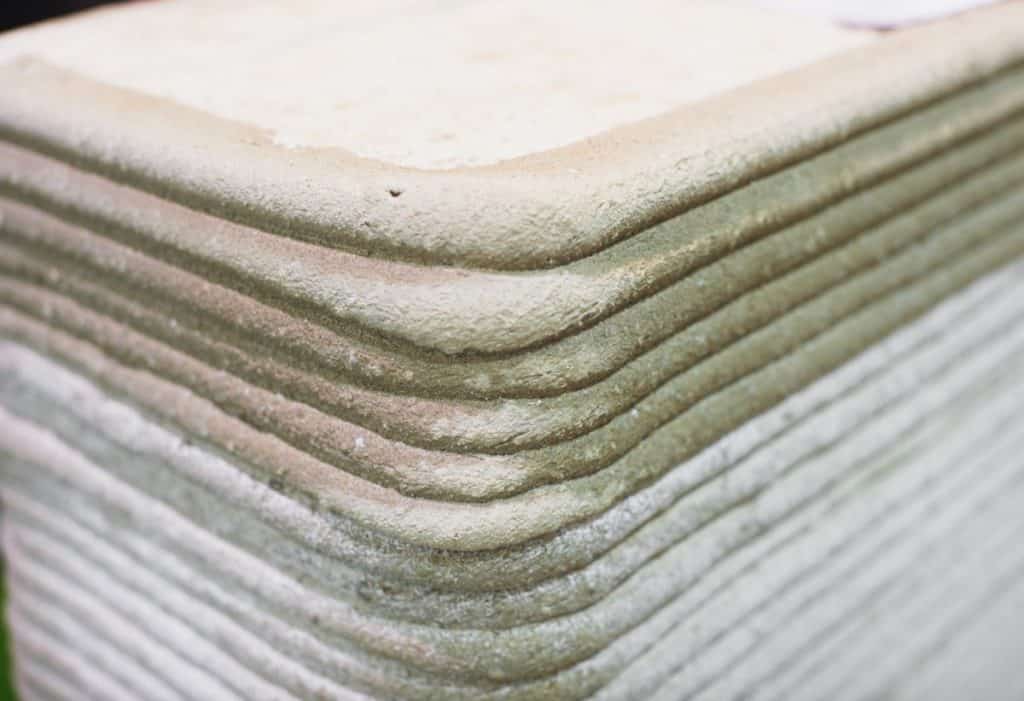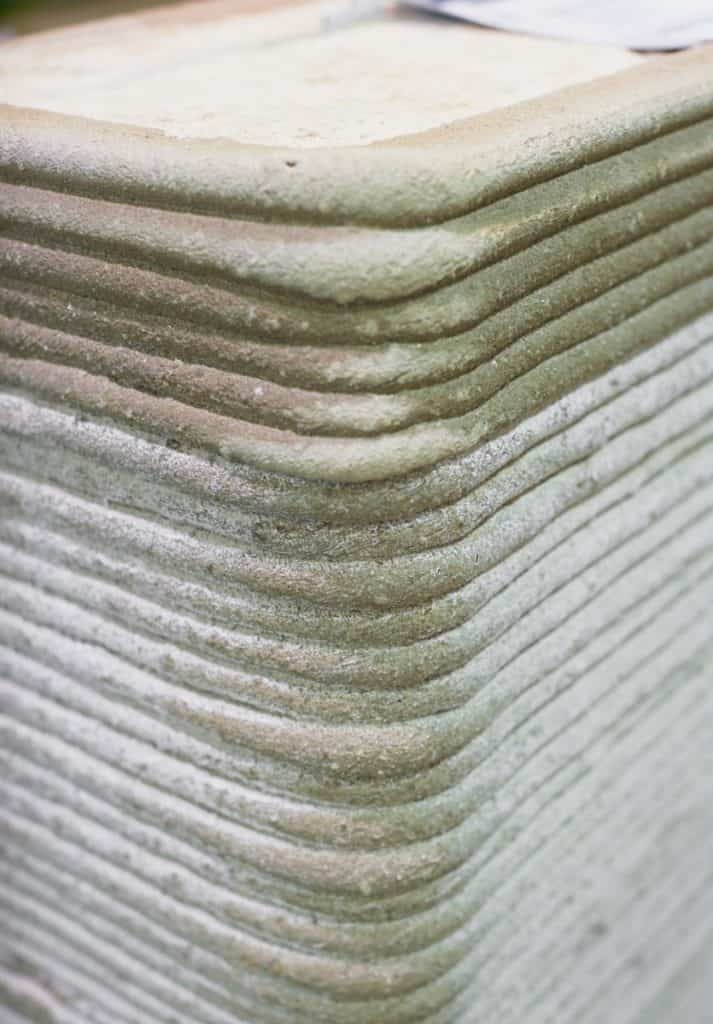Imagine being able to have a house faithful to its design. How great it would be to prevent waste during construction. These are just some of the advantages 3D printed houses can offer you. Every day these types of structures become more popular. But, some people remain wary of the quality of some printed panes. Are printed houses reliable? Do they last?
3D printed houses are more durable than some other construction methods primarily because of the material used. While many homes are made out of wood, 3D printed structures are primarily made out of concrete.
There are many other advantages about 3D printed houses that make them the future of construction. This article will give you more details about how 3D printers create homes and why they are as durable as any other construction.

Understanding 3D Printed Houses
When we hear 3D printed houses, you might imagine a person printing plastic panes with a regular 3D printer and stacking them as legos. But, that’s not the case. 3D printed houses are constructions created with concrete. Concrete is a highly durable material, and these structures can last decades with proper maintenance.
The Making Of A 3D Printed House
To make a 3D printed house, you need a 3D printer. Not the exact size of a regular 3D printer. But, it will do the same process and use the same components.
The first step would be to set up the giant printer. Then you will need to raise the frame and extruder. These pieces are bigger than what you have on your regular 3D printer but serve the same purpose.
The concept remains the same, layers of material are stacked one on top of the other. The design is handled by the computer, which later sends the instructions to the extruder.
Once these two steps have been completed, you need to set up the mortar intake for your 3D printer. You have a mixer that gets dry material and combines it with water and any other liquid. The mixer is connected to the 3D printer extruder.
The motors move the extruder throughout the frame to start creating the first layer of the printing. Concrete is the most common material used for this type of printing.
Before you start printing, it is very important to test your 3D printer to make sure all motors are working correctly. Also, a construction worker will test the moisture levels in the mortar mixture.
This process significantly reduces the number of workers needed in the construction field. But, you will still need people monitoring the project.
Last but not least, the final step would be to clean up the 3D printer extruder. It is essential to do it before the concrete starts to harden inside the mixer and nozzle because it will help to keep the printer working accordingly.

Walls Of A Concrete 3D House
3D houses are printed as a whole piece. You don’t have multiple panels or individual bricks to put together.
Concrete is the primary material used for wall making. At the beginning of the construction, a person should determine the consistency of the mortar that will be used. The wall type is another important thing that needs to be determined before construction starts. Two of the most common styles are hollow walls and mortar support walls.
Types Of Walls
Hollow walls are made on a loop. The extruder starts pouring mortar following the designed shape. Once it has finished creating the form, the nozzle moves 180 degrees to the left or right to do the same form again. This 180 degrees turn leaves a space between the wall panels.
These types of walls are perfect for the interior. They allow you to set your plumbing and electrical connection without any issues. If you want to give it more strength, rebar can be added during construction.
On the other hand, mortar support walls have a zig-zag concrete print between both panels. It makes the wall perfect for exteriors because they offer more structural strength when compared to hollow walls.

How Long Do 3D Printed Houses Last?
3D printed concrete houses can last decades. Experts estimate these structures can last 60 years or more.
Although 3D printed houses are relatively new and the oldest home built has not even turned 20 years, people predict their longevity based on the materials used. For instance, take rebar; most concrete buildings use these steel rods to strengthen the structure. However, rebar gets rusty over time, and once this occurs, the facility becomes weak.
We don’t need rebar in 3D printed houses. The design used for exterior walls is self-fortified. And, in case you feel like your structure needs to be reinforced, you can always go for basalt rebar instead.
The Advantages Of 3D Printed Houses
Printed houses are the future; they offer many advantages when you compare them to other construction styles. You don’t have to trust our word; here’s a list of facts that explain the benefits of 3D printed houses.
- Cost-effective. You require less workforce to put up a 3D printed building. Fewer workers translate to less money to pay for the project.
- Quick to build. 3D printers don’t stop unless you tell them to. If everything is set up correctly, your printer can work 24 hours.
- Less waste. Printers are more precise than humans. The 3D printer will use the exact amount of material needed, as instructed by the motherboard.
- Eco friendly. Construction sites usually require big machinery to move materials from one place to another. With 3D printers, you don’t need a lot of trucks carrying around during the whole project.
- True to the design. These printers can make an exact copy of what the architect designed on their computer. It also allows creating more elaborate designs.

Interesting Facts About 3D Printed Houses
- ICON, a Texas-based company, is currently working on a project in Tabasco, Mexico. The goal is to build a community of no less than 50 inhabitable houses.
- Other structures such as windows and pools are also being 3D printed.
- The tallest 3D printed construction is a five-story building located in China, Jiangsu province.
- The largest 3D printed structure is a 6890 square feet two-story building located in Dubai, United Arab Emirates.
- Some of the biggest companies creating 3D printed buildings and houses include:
- Apis Cor, based in the US and Russia
- CyBe, based in the Netherlands
- Kamp C, based in Belgium
- Mighty Buildings, based in California, US
- PERI Group, based in Germany
- Winsun, based in China
- Wasp, based in Italy
- XtreeE, based in France
- Wasp is currently creating artificial reefs and coral beds made out of concrete, clay, and geopolymers for the Atlantic sea.
- 3D printing can be the solution to housing on Mars.
- Wasp was the first company ever to create a 3D printed house made out of clay. The project is called Tecla.
- COBOD is a major European company that develops construction 3D printers for PERI Group and Kamp C.
Frequently Asked Questions
Do 3D printed houses use rebar?
No, they don’t. While we have some 3D printed structures fortified with rebar, it is not common to see this material as part of the process.
What is the Biggest 3D Printed House?
The biggest 3D printed house is a 2,150 square feet construction in Long Island, New York.
Can I buy a 3D-Printed House in the US?
Yes, you can. While there are not many options in the market, you can buy a 3D-printed house in the United States.
Related Articles
- How Hard Is It To Learn 3D Printing?
- What Shapes Cannot Be 3d Printed? – Details Inside!
- Do 3D Printers Use a Lot of Power? (The Numbers Inside)
- Will 3d Printing Replace Machining? (We Find Out)
Final Thoughts About 3D Printed Houses
It sounds like something taken out of a movie, but you can print a house. These houses are as durable as any other brick and mortar structure. Some experts claim they are even more durable since you don’t need to use rebars which usually rust over time.
3D printed houses offer many advantages when you compare them to regular projects. We know this is not the last we will hear about 3D printed structures, but certainly, the future is now.
Make sure you check out our YouTube channel, and if you would like any additional details or have any questions, please leave a comment below or join us on Discord. If you liked this article and want to read others click here.
